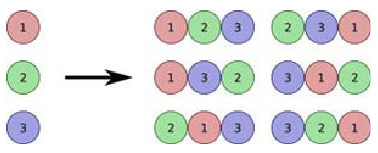A permutation on the integers from 1 to n is, simply put, a particular rearrangement of these integers. Your task is to generate
a given permutation from the initial arrangement
1, 2, 3,..., n using only two simple operations.
- Operation 1: You may swap the first
two numbers. For example, this would change the arrangement 3,2,4,5,1 to 2,3,4,5,1.
- Operation 2: You may move the first number to
the end of the arrangement. For example, this would change the arrangement 3,2,4,5,1 to 2,4,5,1,3.
The input consists of a number of test cases. Each test case begins with a single integer n between 1 and 300. On the same line, a
permutation of integers 1 through n is given where consecutive integers are separated by a single space.
Input is terminated by a
line containing `0' which should not be processed.
For each test case you are to output a string on a single line that describes a sequence of operations. The string itself should
consist only of the characters `1' and `2'. This string should be such that if we start with the initial arrangement
1, 2, 3,..., n - 1, n and successively apply rules 1 and 2 according to the order they appear in the output, then the resulting permutation
is identical to the input permutation.
The output string does not necessarily need to be the shortest such string, but it must be no longer than
2n2 characters. If it is possible to generate the permutation using 0 operations, then you may simply output a blank line.
3 2 1 3
3 2 3 1
4 4 2 3 1
0
1
2
12122

